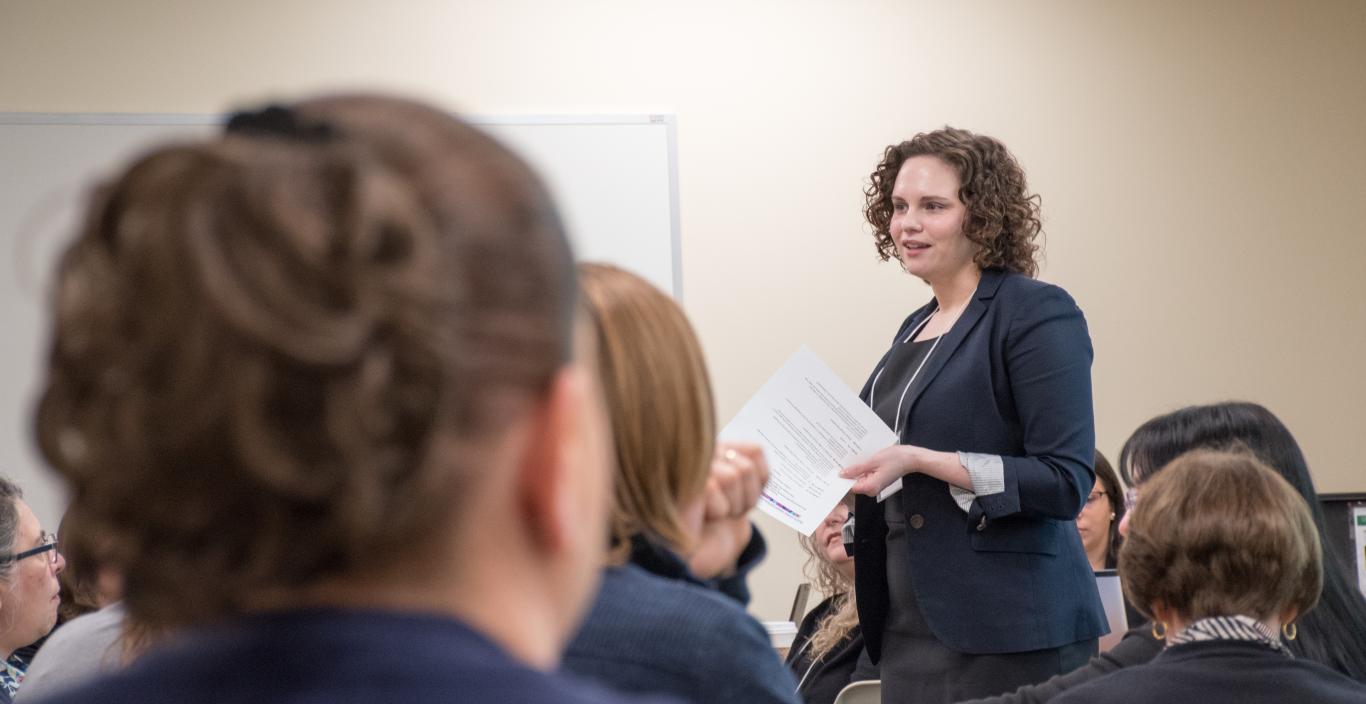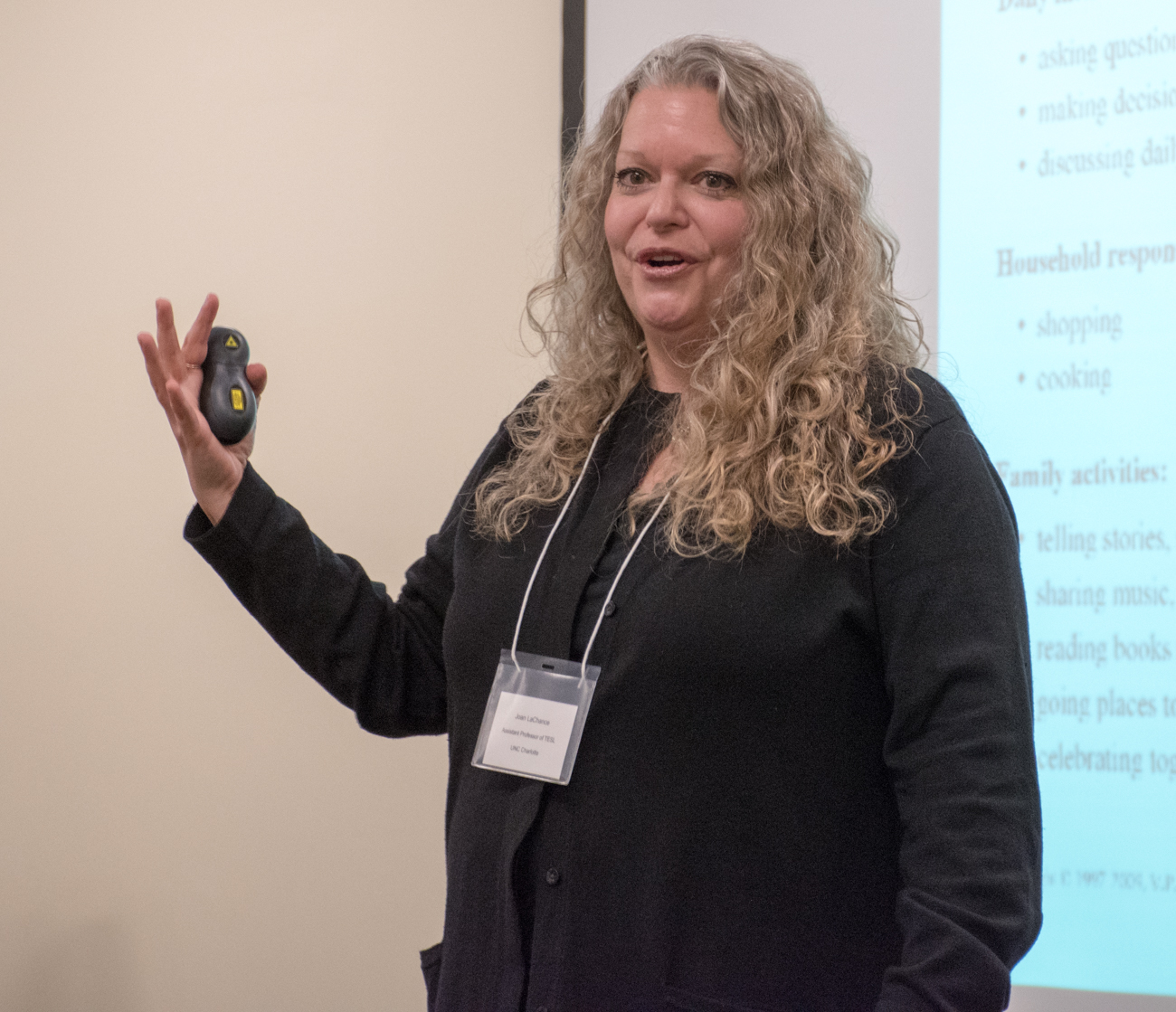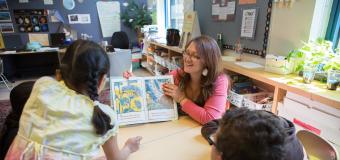For almost 15 years, bilingual education was essentially outlawed in Massachusetts schools. Thanks to the advocacy of many educators, including Lesley Assistant Professors Meg Burns and Amanda Wager and Associate Professor Laura Schall-Leckrone, this method of educating English language learners will again be allowed in classrooms, but now schools (and universities) need to get ready.
New law, new needs
Unlike English-only programs, bilingual or dual language education allows students to learn subjects in their native language as well as in English. The instructor is fluent in both languages or there are two teachers, each fluent in one language, and classes may contain students who all speak the same foreign language (one-way) or a mixture of foreign and English language speakers (two-way). Both languages are used throughout students’ school career, which promotes bilingualism and biliteracy as well as cultural inclusion.
Before the law passed, Massachusetts had a primarily “transitional bilingual education” (TBE) system, aimed at helping students transition from coursework in their first language to English. Classes with a concentration of students who spoke the same language could receive lessons in that language until their English improved.
An article published in January by WBUR found that the results of the transitional system were “murky.” The arrival of millionaire businessman Ron Unz, a champion for English-only legislation, funded efforts to pass the 2002 legislation that ended most bilingual instruction in Massachusetts. Unz, who was a software developer, had already financially supported similar laws in California (that state reinstated bilingual education in 2016) and Arizona.
But in the intervening years, non-English speaking students have doubled in Massachusetts and the success of immersing students into sheltered English instruction (SEI) programs is inconclusive.
Many see the reinstatement of program options for dual language education through the LOOK Act (“language opportunity for our kids”) as a move in the right direction, but after 15 years of the English-only model, bilingual teachers are scarce.
In March, Lesley hosted a one-day conference on dual language learning for teachers, superintendents and universities, sponsored by the Multistate Association for Bilingual Education (MABE).
“The law has changed, we have a lot of new opportunities, but dual language is hard. We need support. We need to connect with each other,” Burns, the incoming MABE president, told educators at the conference. Dr. Burns is a faculty member of Lesley’s English Language Learning program.
The invitation-only event, titled “Envisioning the Future of Equitable English Language Learner Education in Massachusetts: The Case for Dual Language Education,” targeted “gateway cities” that have significant multilingual populations, including Boston, New Bedford, Fall River and Salem.
The case for two languages in the classroom
Although there is a place for English-only programs such as SEI, it was never the best model for students, according to Burns and her colleagues at MABE. She said research doesn’t support the English-only model. Several studies, in fact, show that dual language learning students eventually exceed English language learners and native English-speaking students in English-only programs in every subject, not just in language learning. Meanwhile, high school English language learners who have not experienced bilingual education in Massachusetts have the highest drop-out rates among their peers.
Analyzing more than 6 million student school records, researchers Dr. Virginia Thomas and Dr. Wayne Collier found that dual language learners pull ahead of their peers around fourth grade. At the one-day conference, University of North Carolina Charlotte Assistant Professor Dr. Joan Lachance presented the pair’s findings.
The researchers say dual language learners tend to score higher on achievement tests, are more engaged in the classroom, receive more college scholarships and have lower drop-out rates.
The bilingual method closes the achievement gap for non-English speaking students, and Lachance explained, “There is no more inappropriate placement in special needs instruction because of second language issues.”
Supporting dual language learning
While the research is there, dual language programs still need more support, said Burns. Primary and secondary schools need training on how to implement bilingual models that work for their specific student populations, superintendents need to be equipped to champion the model to their school boards and higher education needs to create programs that train bilingual teachers.
“MABE is one of the only groups that does that kind of consulting, but we’re small,” Burns said. “We’re trying to be in collaboration with universities, to be strategic about how we provide this coursework.”
Burns expects the state to finalize its requirements for a dual education license by May, so she wants universities to consider offering the necessary coursework for that license now.
She would like to see Lesley’s Graduate School of Education offer a program and to work alongside organizations such as MABE and MATSOL (Massachusetts Association of Teachers of Speakers of Other Languages) on which Burns, Wager and Schall-Leckrone serve as board members.
“As dual language programs take off, we have to make sure these programs succeed,” said Burns.




